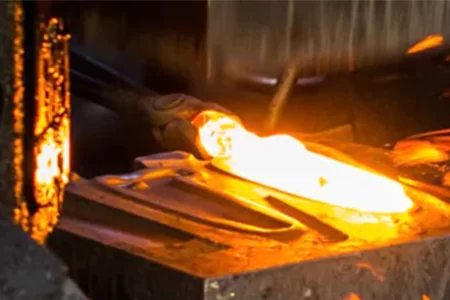HULK Metal will continuously update the dynamics of the metal products industry, to support your decision-making.

Hulk Metal News
Share what's new
What are the advantages and disadvantages of the hot forging process?

Hot forging is a common metal-forming process that heats metal materials to deform them in a plastic state to obtain parts with the desired shape and performance. It is widely used in various industrial fields, such as Cable & Wire Grips, Trailer Accessories, Building Hardware, and Metal Exterior Accessories For Car, SUV, Truck, etc, and its advantages and disadvantages are worth in-depth discussion. This article will analyze the advantages and disadvantages of the hot forging process in detail from multiple aspects, in order to provide a reference for research and production in related fields.
Advantages of hot forging
High material utilization rate
The hot forging process can significantly improve the utilization rate of materials. By heating, metal materials can be deformed to a large extent in a plastic state, thereby reducing the material waste caused by cutting. This is of great significance in cost control and resource conservation.
Excellent mechanical properties
Hot forging parts usually have excellent mechanical properties. Because the metal grains are rearranged and the internal structure is optimized during the forging process, the strength, toughness, and fatigue resistance of the parts are significantly improved. This makes hot forgings perform well in high-stress and high-load working environments, and are widely used in the manufacture of key structural parts.
Strong process flexibility
Hot forging is suitable for a variety of metal materials, including steel, aluminum, titanium, nickel, and other alloys. Different materials can meet the performance requirements of different products by adjusting the heating temperature and forging process parameters. In addition, hot forging can produce a variety of specifications of products from small parts to large structural parts, and the process adaptability is strong.
High forming efficiency
Compared with cold forging, hot forging can complete the forming of complex shapes at low deformation resistance because the material has good plasticity and fluidity at high temperatures. The forging process at high temperatures not only improves production efficiency but also reduces equipment wear and energy consumption.
Low overall cost
Although the hot forging process requires more energy for heating, considering the material utilization rate, production efficiency, and product performance, the overall cost of the hot forging process is usually lower than other forming processes. Especially in mass production, the cost advantage of the hot forging process is more obvious.
Disadvantages of hot forging
High energy consumption
The hot forging process requires heating the metal material to a certain temperature, which consumes a lot of energy. Especially in large-scale production, energy consumption becomes a cost factor that cannot be ignored. In addition, high-temperature heating also has a certain impact on the environment, and corresponding environmental protection measures need to be taken.
High equipment requirements
The hot forging process has high requirements for equipment and requires special forging equipment and heating equipment. At the same time, in order to ensure production safety and product quality, the maintenance and maintenance of the equipment also require a lot of manpower and material resources. These equipment investment and maintenance costs may put a certain pressure on small and medium-sized enterprises.
Limited mold life
Hot forging molds work in a high temperature and high pressure environment and are easily affected by thermal fatigue, wear, etc., and their service life is relatively short. Frequent mold replacement not only increases production costs but also affects production efficiency. Therefore, how to extend the mold life and reduce mold costs are important challenges facing the hot forging process.
Complex process control
The hot forging process involves multiple process parameters such as temperature, stress, deformation speed, etc. These parameters affect each other and put forward high requirements for process control. Deviation of any parameter may lead to product quality problems. Therefore, advanced control systems and rich experience are needed to ensure process stability and product consistency.
Surface quality problems
Due to the inevitable oxidation and decarburization during high-temperature forging, the surface quality of hot forgings is often not as good as that of cold forgings. Oxide scale and surface defects may need to be processed through subsequent processing, which increases production costs and process complexity to a certain extent.
As an important metal forming method, hot forging has many advantages such as high material utilization, excellent mechanical properties, strong process flexibility, high forming efficiency, and low comprehensive cost. However, its high energy consumption, high equipment requirements, limited die life, complex process control, and surface quality problems cannot be ignored. In actual production, the hot forging process should be reasonably selected according to specific needs and conditions, and the application level and economic benefits of the hot forging process should be continuously improved through technological innovation and process optimization.
In the future development, with the continuous emergence of new materials and new technologies, hot forging technology will usher in more opportunities and challenges. By strengthening basic research and promoting the application of automation and intelligent technology, hot forging technology will make greater contributions to the high-quality development of the manufacturing industry.
Article Navigation
Article Navigation
Industries
Forging Factory



